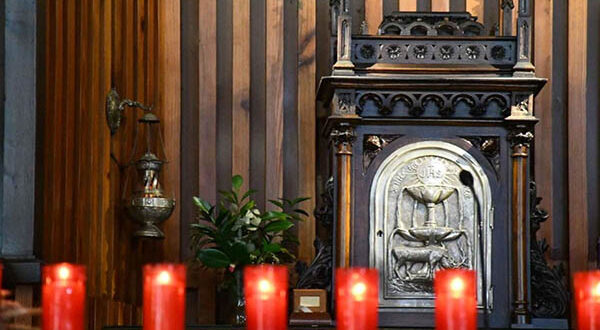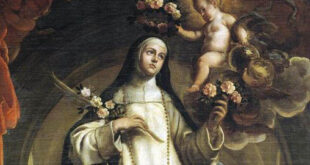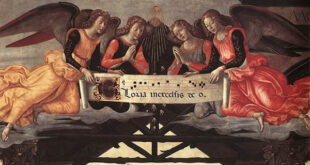The Real Presence of Christ: Two Candles as Eternal Witnesses
I. INTRODUCTION: A FLAME THAT WHISPERS TO THE HEART
In the dim light of many churches, between the silence of recollection and the whisper of the praying soul, two humble candles burn beside the Tabernacle. They are not decoration. They are not there out of custom. They are flames that speak. Tongues of fire that whisper an eternal message: Christ is here. Alive. Real. Present.
But why two? What history and mystery surround these twin flames that keep watch over the Tabernacle? What spiritual and theological meaning lies behind this ancient and seemingly simple practice? This article is an invitation to look with new eyes at what we often overlook. Because in the Church, nothing is superfluous: everything speaks, everything teaches, everything leads to the Mystery.
II. BRIEF HISTORY: FROM THE CATACOMBS TO THE TEMPLES
From the earliest centuries of Christianity, light has been intimately connected to the presence of Christ. In the Roman catacombs, Christians lit oil lamps not only out of necessity, but as a symbol of faith: Christ is the Light of the World (cf. Jn 8:12).
As the liturgy developed, so did the symbolic use of light. In the Middle Ages, the custom of placing two lit candles next to the Tabernacle became common, especially when the Blessed Sacrament was reserved within it.
This usage was codified in various liturgical rubrics, especially after the Council of Trent, which reaffirmed the Real, true, and substantial Presence of Jesus Christ in the Eucharist in the face of Protestant heresies. The candles were—and still are—silent yet eloquent witnesses of that presence.
III. THE THEOLOGICAL MEANING OF THE TWO CANDLES
1. Witnesses of the Real Presence
The two lit candles next to the Tabernacle represent the Church’s living faith in the real presence of Jesus in the Blessed Sacrament. They are not mere visual cues, but theological witnesses, as if proclaiming: “Here is the Bridegroom” (Mt 25:6).
Let us recall that the Eucharist is not a symbol, but a substance. As the Council of Trent teaches:
“In the sacrament of the Eucharist, the Body and Blood together with the soul and divinity of our Lord Jesus Christ are truly, really, and substantially contained” (DS 1651).
The two candles are the modern-day “Elijahs” crying out in the desert of this secularized world: “Adore Christ!”
2. Memory of the Duality of Testimony
In Mosaic law, it was required that every testimony be confirmed by at least two witnesses:
“A single witness shall not suffice against a person for any crime or for any wrong… the matter shall be established by the evidence of two or three witnesses” (Deut 19:15).
In this light, the two candles bear witness before heaven and earth that Christ is truly present. They are like Moses and Elijah on Mount Tabor, confirming the glory of the Lord.
3. Symbol of the Old and New Testaments
The double flame also represents the two covenants fulfilled on the altar: the Old Testament which prefigures Christ, and the New which reveals and perpetuates Him. Both Scriptures bow before the Sacrament of Love.
4. Icon of the Soul and Body Worshiping Together
Two candles: the soul and the body. Both must burn in adoration. The light symbolizes a living, whole worship, without division. It reminds us that worshiping with the body—kneeling, in silence, with reverence—is no less important than worshiping with the soul.
IV. PASTORAL AND PRACTICAL APPLICATIONS
1. Recognizing the Real Presence with the Senses and the Heart
When you enter a church, do not walk past the Tabernacle. Look at the candles. They are your teachers. They say: “Here is the King. Kneel down.”
- Make a genuflection with awareness and devotion.
- Offer a brief prayer: “My Lord and my God” (Jn 20:28).
2. Promote Silent Eucharistic Adoration
The candles next to the Tabernacle are a call to silence and recollection. Commit to at least 15 minutes of silent adoration each week. Let yourself be illuminated by that double flame that does not burn in vain.
3. In Your Home: A Small “Tabernacle Chapel”
You cannot have a Tabernacle at home, but you can set aside a place for encountering God:
- Place a crucifix and two candles (real or electric).
- Dedicate that space to daily prayer.
- Imitate the structure of the Tabernacle: Christ at the center, and the light that adores Him.
4. Educate Children and Youth in Eucharistic Love
Explain to the little ones what those candles mean. Say:
- “Look at those two lights. They are like our eyes looking at Jesus.”
- Or: “Those candles tell Jesus that we love Him and adore Him.”
5. Frequent Confession: Let Your Soul Be a Tabernacle Lit from Within
The soul in grace becomes God’s dwelling. Let the light of faith and charity burn within you. The candles beside the Tabernacle should burn not only in church, but in every heart.
V. PRACTICAL GUIDE FROM A THEOLOGICAL AND PASTORAL PERSPECTIVE
| Concrete Action | Theological Foundation | Pastoral Application |
|---|---|---|
| Kneeling before the Tabernacle | Real Presence of Christ (Trent, Jn 6) | Formation in reverence |
| Lighting two candles during family prayer | Memory of the witnesses | Creating a culture of adoration at home |
| Promoting perpetual adoration | “Could you not watch one hour with me?” (Mt 26:40) | Strengthening parish life |
| Catechesis on liturgical signs | Lex orandi, lex credendi | Living liturgical education |
| Organizing adoration shifts before the Tabernacle | “Zeal for your house consumes me” (Jn 2:17) | Spiritual renewal of the community |
VI. TODAY MORE THAN EVER: A CALL TO REVERENCE
We live in times of confusion. In many modern churches, the Tabernacle has been displaced, relegated to side chapels, and even forgotten. The double candles have disappeared in favor of cold electric lights—or nothing at all.
But you can light that flame again. You can restore the Tabernacle to its rightful place in your heart, in your parish, in your surroundings. Be like the two candles:
- Constant.
- Silent.
- Burning.
- Witnessing.
VII. CONCLUSION: THEY ARE NOT JUST TWO CANDLES
The flames that burn beside the Tabernacle are neither decoration nor protocol. They are flames that speak. They remind us that in that small tabernacle dwells the King of the Universe, the Bridegroom of the soul, the Living Bread come down from heaven.
Each time you see those double candles, may your soul bow, your heart open, and your faith be renewed. Because even if everything changes, even if the world grows cold, those two lights still burn in the night. Like in the Exodus, where the Lord led His people with a pillar of fire, so today those flames lead us to the Eternal Love hidden under the sacramental species.
“Come, let us bow down and worship; let us kneel before the Lord our Maker.”
Psalm 95:6






